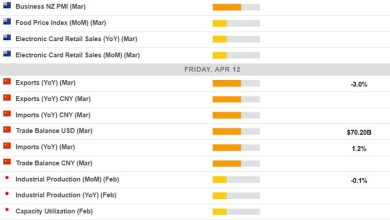Ex-LinkedIn Manager Had to Put Workers on PIPs, Then Got Laid Off

- A former LinkedIn engineering manager shares the company’s evolution in performance reviews.
- He said he had to identify underperforming employees to implement performance improvement plans (PIPs).
- LinkedIn then laid off more than 1,400 employees in two rounds of job cuts last year.
This essay as told is based on a transcribed conversation with a former senior engineering manager at LinkedIn. Business Insider verified his former employment. The following has been edited for length and clarity.
When I moved into a leadership role at LinkedIn, it was with the goal of helping people become the best engineers and teammates they could be.
For several years, I had the pleasure of being able to do this, with the full support and encouragement of my company. Then everything changed when I was asked early last year to identify 10% of my team who weren’t meeting expectations, even if they were.
It made me very frustrated and sad that it had come to this. Before that, LinkedIn was a company that stuck to its values even in difficult times. Being asked to do this was not only wrong: it went against the company’s values, which was very difficult to accept.
This was contrary to the way we were encouraged to manage people in previous years. It was kind of wrapped up in “it’s not that we want you to misidentify people,” but we had to rank our team.
LinkedIn has a one-to-five-tier system for rating worker performance. A five means they are exceeding expectations, while a one or two means they are underperforming and at risk of being subject to a PIP.
I know some managers felt the pressure to find “twos” and give them to people they didn’t think deserved it.
During the pandemic, we kind of lowered the bar of performance expectations. We had this “sweet three” concept, where maybe there are good reasons why people aren’t doing well because of their mental health or things of that nature, and the feeling among the top brass was that “you put them on a 3”. rating because you’re trying to take care of them” and that we should stop doing that in 2023.
There is a 3-step process before a PIP
The first step was to identify some of the underperformers on my team. Then you put those employees through a 30-day improvement plan. If they don’t, we move them to an “improvement goal”, or IG, which is a slightly more formal 30-day improvement plan. If they are still not meeting expectations at the end of this period, they are then put on a formal performance improvement plan.
My manager told me to identify people who I thought actually met these criteria. At first I couldn’t identify anyone who had done it, but after a director’s meeting my manager told me I really needed to find someone. It was sort of like the rug was pulled out from under me in the sense that I had to find someone.
Performance was assessed using a quantifiable score, called a CPP, which is a “career performance profile.” It’s like a checklist of behaviors and evidence indicators they want to see from you. This is what we use to determine if someone is ready to be promoted. You would evaluate someone as an engineer in three main areas: leadership, execution, and craftsmanship.
I identified someone on my team who was not fully meeting expectations. They might have gotten a three in the past, but looking at the CPP guidelines, that wasn’t the case, so I accepted that someone had a poor performance. But this person was able to get out of the process after 30 days and was able to improve, so they didn’t go as far as being put on PIP.
Herculean effort to come back from a PIP
Some people have survived PIP because the idea is to help them get through it. But once you are subject to a PIP, it is very difficult to come back from it due to the three-step process that precedes this. It was quite rare for people to successfully come out of a PIP, because in a manager’s mind, they were given the opportunity to improve in the previous stages.
If you are subject to a PIP, decide if you really want to come back from it, as it is going to take a lot of effort. At this point, time is running out. So think about whether you want to spend this time and effort to start getting your affairs in order. It’s really hard to come back from a PIP, and in the tech industry it’s considered inevitable once you get to that point.
We must also consider the environment for what it is. Do you think you are not performing well, or are you not valued by your direct manager, and will he or she provide you with adequate support? Going into PIP, do you feel like your manager wants you to succeed? If they’re already starting to be a little cold or reserved, you’re unlikely to change your mind.
The “victims list” was leaked on Blind
LinkedIn laid off 716 people in sales, operations and support workers in May 2023. Then, in October, a list of people who were going to be laid off in its second round of cuts was leaked on Blind over the course of a weekend.
Other managers texted me and told me there was a “kill list” on Blind. The list was taken down, but the people who had it said they would check to see if my name was on the list, but I didn’t want to know.
The following Monday we received an email announcing the layoffs. I saw that I was one of the chosen people. I was surprised because I thought I would be seen as someone who brought great value to the company.
But I was grateful that I didn’t have to fire anyone on my team as a leader, and I felt like I was lucky that I didn’t have to do that to anyone else.
LinkedIn did not respond to a request for comment from Business Insider. A spokesperson previously told BI it does not have a percentage mandate for performance management.
Are you a technical worker with ideas to share? Contact this journalist at jmann@businessinsider.com
businessinsider




